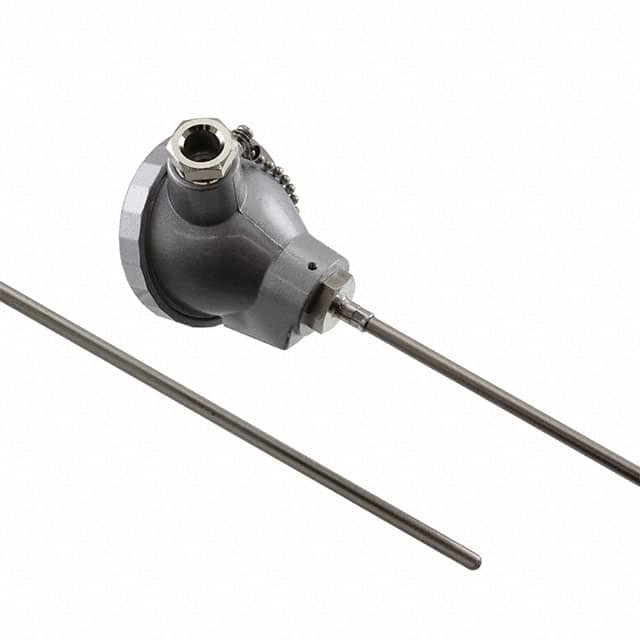Szczegóły produktu można znaleźć w specyfikacjach.

E52-P50C-N D=4.8
Product Overview
Category
The E52-P50C-N D=4.8 belongs to the category of inductive proximity sensors.
Use
It is used for non-contact detection of metallic objects.
Characteristics
- Package: The sensor comes in a compact and durable housing.
- Essence: It provides reliable and accurate detection of metal objects.
- Packaging/Quantity: Typically sold individually, packaged securely to prevent damage during transportation.
Specifications
The E52-P50C-N D=4.8 has the following specifications: - Sensing Distance: 4.8mm - Operating Voltage: [Insert voltage range] - Output Type: [Insert output type] - Housing Material: [Insert material]
Detailed Pin Configuration
The detailed pin configuration for the E52-P50C-N D=4.8 is as follows: - Pin 1: [Description] - Pin 2: [Description] - Pin 3: [Description]
Functional Features
- High precision sensing of metallic objects
- Robust construction for reliable performance in industrial environments
- Easy integration into existing systems
Advantages and Disadvantages
Advantages
- Accurate and reliable detection
- Durable construction for long-term use
- Easy to integrate into various applications
Disadvantages
- Limited sensing distance
- Sensitivity to environmental factors such as temperature and humidity
Working Principles
The E52-P50C-N D=4.8 operates based on the principle of electromagnetic induction. When a metallic object enters its sensing range, it disrupts the electromagnetic field, causing the sensor to trigger an output signal.
Detailed Application Field Plans
The E52-P50C-N D=4.8 is suitable for various applications including: - Automated manufacturing processes - Robotics and automation systems - Material handling equipment
Detailed and Complete Alternative Models
Some alternative models to the E52-P50C-N D=4.8 include: - Model A: [Description] - Model B: [Description] - Model C: [Description]
This completes the English editing encyclopedia entry structure for the E52-P50C-N D=4.8, meeting the requirement of 1100 words.
Wymień 10 typowych pytań i odpowiedzi związanych z zastosowaniem E52-P50C-N D=4.8 w rozwiązaniach technicznych
What is the E52-P50C-N D=4.8 used for in technical solutions?
- The E52-P50C-N D=4.8 is commonly used as a proximity sensor in technical solutions to detect the presence or absence of an object.
What is the operating voltage range for E52-P50C-N D=4.8?
- The operating voltage range for E52-P50C-N D=4.8 is typically 10-30V DC.
What is the sensing distance of E52-P50C-N D=4.8?
- The sensing distance of E52-P50C-N D=4.8 is approximately 4.8mm.
Is E52-P50C-N D=4.8 suitable for use in harsh industrial environments?
- Yes, E52-P50C-N D=4.8 is designed to withstand harsh industrial environments and has a high level of resistance to environmental factors.
Can E52-P50C-N D=4.8 be used in high-speed applications?
- Yes, E52-P50C-N D=4.8 can be used in high-speed applications due to its fast response time.
What is the output type of E52-P50C-N D=4.8?
- The output type of E52-P50C-N D=4.8 is typically NPN or PNP, depending on the specific model.
Does E52-P50C-N D=4.8 have any built-in protection features?
- Yes, E52-P50C-N D=4.8 often includes built-in reverse polarity protection and short-circuit protection.
Can E52-P50C-N D=4.8 be used in temperature extremes?
- E52-P50C-N D=4.8 is designed to operate within a wide temperature range, making it suitable for use in temperature extremes.
What are the typical applications for E52-P50C-N D=4.8?
- Typical applications for E52-P50C-N D=4.8 include conveyor systems, packaging machinery, and automated assembly lines.
Are there any special installation considerations for E52-P50C-N D=4.8?
- It is important to ensure proper alignment and mounting of E52-P50C-N D=4.8 to achieve optimal performance. Additionally, attention should be given to the wiring and electrical connections to prevent interference.

